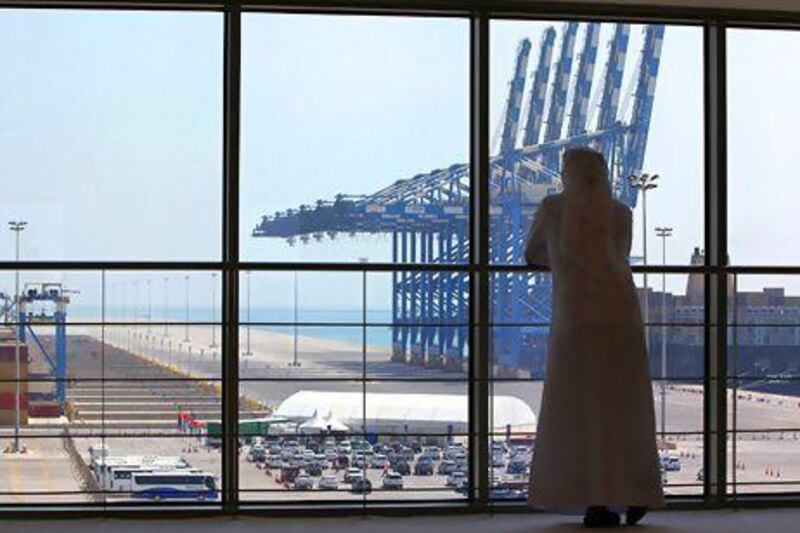Abu Dhabi Ports Company expects to handle more than one million containers this year, up 20 to 30 per cent from last year, as Khalifa Port widens the gateway for trade.
More than six months after opening, Khalifa Port is preparing to take delivery of a second batch of automated cranes to meet rising demand, said Tony Douglas, the chief executive of ADPC.
Geared as the first fully automated dockyard in the region, the Taweelah-based deepwater terminal has taken over from the ageing and crowded Port Zayed as the emirate's principle sea-trade terminal.
"The first six months have been remarkable," he said. "Since mid-December all of the operations have been here. The port has been spectacularly successful in our opinion, as not only has it been able to facilitate a far faster transition [from Port Zayed] than was envisioned but it gives us the ability to grow." The port will cross the milestone of more than 1 million standard containers units later this year, said Mr Douglas.
"We are looking to grow 20 to 30 per cent this year against a backdrop of 3 to 4 per cent growth in the global industry," he said. After opening on September 1, ADPC had allowed a six-month window for the transfer of shipping lines from Port Zayed to Port Khalifa.
But the transition has been much faster. Mr Douglas said shipping companies helped to speed up the move once it became clear the port would not face any teething problems.
One of the big draws for exporters from Khalifa Port is the time savings from the reduction in paperwork required compared with the old port. Radio frequency identity tags on containers and lorries coming in and out of the facility and online registering of shipments make the customs process speedier.
The growth in trade volume also reflects a rapid increase in output by two of the emirate's biggest exporters: Emirates Aluminium (Emal) and Borouge.
Longer-term, ADPC is counting on a steady stream of business from tenants of Khalifa Industrial Zone Abu Dhabi (Kizad), which encircles the port.
"We've been pleasantly surprised by interest in Kizad," said Mr Douglas. "We are in commercial discussions with over 60 per cent of available land in zone A, which is 51,000 square kilometres."
Officials have estimated the companies that have bought land so far will be shipping about 240,000 containers a year once they are established.
Port Khalifa is far larger than Port Zayed, which after more than four decades of service in 2011 was nearly at its annual capacity of 800,000 containers.
Port Khalifa is designed with an initial capacity of 2.5 million containers a year, a figure that could rise to 15 million by 2030
Mr Douglas said ADPC would be taking delivery of a second batch of cranes starting this summer.
"Because we have done better than we expected we have already placed the order for the next batch of ship-to-shore cranes and the next stacking cranes," he said.
ADPC is also focusing on plans for the future of Port Zayed. Mr Douglas said the 800-hectare site was being earmarked as a possible terminal for cruise ships to handle tourists visiting the emirate. It is currently being used as a gateway for new cars shipped to the capital as well as for grain and vegetables.





